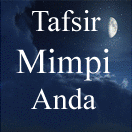Southern Alaska is underlain
by a complex amalgam of accreted terranes, including the
Wrangellia superterrane (consisting of the peninsular,
Wrangellia, and Alexander terranes), and farther outboard,
the Chugach–Prince William superterrane. During much of
the Mesozoic, the two superterranes formed a magmatic arc
and accretionary wedge, respectively, above a circum-Pacific
subduction zone. The Border Ranges fault forms the boundary
between the Wrangellia and Chugach–Prince William
superterranes; it initiated as a subduction thrust but has been
reactivated in various places as a strike-slip or normal fault.
On the Kenai Peninsula the Chugach terrane contains two
major units. Farther inboard lies the McHugh complex, composed
mainly of basalt, chert, argillite, and graywacke, as well
as several large ultramafic massifs. Radiolarians from
McHugh cherts throughout south-central Alaska range in age
from Ladinian (middle Triassic) to Albian-Aptian (mid-Cretaceous).
The interval during which the McHugh complex
formed by subduction-accretion is not well known, but probably
spanned most of the Jurassic and Cretaceous. The
McHugh has been thrust seaward on the Eagle River/Chugach
Bay fault over a relatively coherent tract of trench turbidites
assigned to the Upper Cretaceous Valdez Group. After the
protracted episode of subduction-accretion that built the
Chugach terrane, the accretionary wedge was cut by neartrench
intrusive rocks, assigned to the Sanak-Baranof plutonic
belt, probably related to ridge subduction.
The McHugh complex of south-central Alaska and its
lateral equivalent, the Uyak complex of Kodiak, are part of
the Mesozoic/Cenozoic subduction complex of the Chugach
terrane. Despite its vast extent and its potential value in
reconstructing the tectonics of the Pacific realm, the McHugh
has not been very extensively studied, especially compared to
similar tracts such as the Franciscan of California or the Shimanto
of Japan. The evolution of the McHugh and its equivalents
can be broken down into three broad, somewhat
overlapping phases: (1) origin of igneous and sedimentary
protoliths; (2) incorporation into the subduction complex
(“accretion”), and attendant deformation and metamorphism;
and (3) younger deformations.
Few fossil ages have been reported from the McHugh
complex with the best paleontological control now available
from the Seldovia quadrangle. At several places, mostly in
Kachemak Bay, radiolarian chert depositionally overlies pillow
basalt. Precise radiolarian age calls show that the base of
the chert varies in age from Ladinan to Albian-Aptian. Other
chert sections, which are typically fault-bounded and have no
stratigraphic context, also range from Ladinian to Albian.
Graywacke depositionally overlying chert has yielded Early
Jurassic (Pleinsbachian) radiolarians. These ages are readily
explained by a stratigraphic model in which the McHugh
basalts were formed by seafloor spreading, the overlying
cherts were deposited on the ocean floor as it was conveyed
toward a trench, and the argillite and graywacke record
deposition in the trench, just prior to subduction-accretion.
The timing of the subduction-accretion is not well known but
probably spanned most of the Jurassic and Cretaceous.
Limestones within the McHugh complex are of two categories.
A limestone clast in McHugh conglomerate has yielded
conodonts with a possible age range of late Meramecian
to early Morrowan (Late Mississippian to Early Pennsylvanian).
This clast could have been shed from the Strelna formation
of the Wrangellia terrane. Most of the dated limestones,
however, are tectonic blocks—typically occurring as severely
extended strings of boudins—that have yielded Permian
fusulinids or conodonts. Both the fusulinids and conodonts
are of shallow-water, tropical, Tethyan affinity; the fusulinids
are quite distinct from those of Wrangellia. The limestone
blocks might represent the tops of seamounts that were
decapitated at the subduction zone. If so, some of the ocean
floor that was offscraped to form the McHugh complex must
have formed in the Paleozoic.
The seaward part of the Chugach terrane is underlain by
the Valdez group of Late Cretaceous (Campanian? to Maastrichtian)
age. In the Kenai Peninsula, it includes medium- and
thin-bedded graywacke turbidites, black argillite, and minor
pebble to cobble conglomerate. These strata were probably
deposited in a deep-sea trench and accreted shortly thereafter.
Most of the Valdez group consists of relatively coherent strata,
deformed into regional-scale tight to isoclinal folds, cut by
a slaty cleavage. The McHugh complex and Valdez group are
juxtaposed along a thrust, which in the area of Turnagain
Arm has been called the Eagle River fault, and on the Kenai
Peninsula is known as the Chugach Bay thrust. Beneath this
thrust is a mélange of partially to thoroughly disrupted Valdez
group turbidites. This monomict mélange, which is quite distinct
from the polymict mélanges of the McHugh complex,
can be traced for many kilometers in the footwall of the Eagle
River thrust and its along-strike equivalents.
In early Tertiary time, the Chugach accretionary wedge
was cut by near-trench intrusive rocks forming the Sanak-
Baranof plutonic belt. The near-trench magmatic pulse
migrated 1,367 miles (2,200 km) along the continental margin,
from about 65–63 Ma at Sanak Island in the west to
about 50 Ma at Baranof Island in the east. The Paleogene
near-trench magmatism was related to subduction of the
Kula-Farallon spreading center.
Mesozoic and Cenozoic rocks of the accretionary wedge
of south-central Alaska are cut by abundant late brittle faults.
Along Turnagain Arm near Anchorage, four sets of late faults
are present: a conjugate pair of east-northeast-striking dextral
and northwest-striking sinistral strike-slip faults; north-northeast-
striking thrusts; and less abundant west-northwest-striking
normal faults. All four fault sets are characterized by
quartz ± calcite ± chlorite fibrous slickenside surfaces and
appear to be approximately coeval. The thrust- and strikeslip
faults together resulted in subhorizontal shortening perpendicular
to strike, consistent with an accretionary wedge
setting. Motion on the normal faults resulted in strike-parallel
extension of uncertain tectonic significance. Some of the
late brittle faults host gold-quartz veins, which are the same
age as nearby near-trench intrusive rocks. By implication, the
brittle faulting and gold mineralization are probably related
to ridge subduction.
Scattered fault-bounded ultramafic-mafic complexes in
southern Alaska stretch 600 miles (1,000 km) from Kodiak
Island in the south to the Chugach Mountains in the north.
These generally consist of dunite +/- chromite, wehrlite,
clinopyroxenite, and websterite, which grade upward into gabbronorites.
These rocks are intruded by quartz diorite, tonalite,
and granodiorite. Because of general field and petrographic
similarities, these bodies are generally regarded as having a
similar origin and are named the Border Ranges ultramaficmafic
complex (BRUMC). The BRUMC includes six bodies on
Kodiak and Afognak Islands, plus several on the Kenai Peninsula
(including Red Mountain, parts of the Kachemak terrane
(now obsolete, but the ultramafic complex is renamed the Halibut
Cove ultramafic massif), and other smaller bodies. In the
northern Chugach Mountains the BRUMC includes the Eklutna,
Wolverine, Nelchina, and Tonsina complexes and the
Klanelneechena complex in the central Chugach Mountains.
Some models for the BRUMC suggest that all these bodies
represent cumulates formed at the base of an intraoceanic
arc sequence and were cogenetic with volcanic rocks now
preserved on the southern edge of the Wrangellian composite
terrane located in the Talkeetna Mountains. However, some
of the ultramafic massifs on the southern Kenai Peninsula are
probably not related to this arc but represent deep oceanic
material accreted in the trench. The ultramafic massifs on the
Kenai Peninsula appear to be part of a dismembered assemblage
that includes the ultramafic cumulates at the base, gabbroic-
basalt rocks in the center, and basalt-chert packages in
the upper structural slices. The ultramafic massifs may represent
pieces of an oceanic plate subducted beneath the
Chugach terrane, with fragments offscraped and accreted
during the subduction process. There are several possibilities
as to what the oceanic plate may have been, including “normal”
oceanic lithosphere, an oceanic plateau, or an immature
arc. Alternatively, the ultramafic/mafic massifs may represent
a forearc or “suprasubduction zone” ophiolite, formed seaward
of the incipient Talkeetna (Wrangellia) arc during a
period of forearc extension.
See also CONVERGENT PLATE MARGIN PROCESSES.

















Tidak ada komentar:
Posting Komentar
Catatan: Hanya anggota dari blog ini yang dapat mengirim komentar.